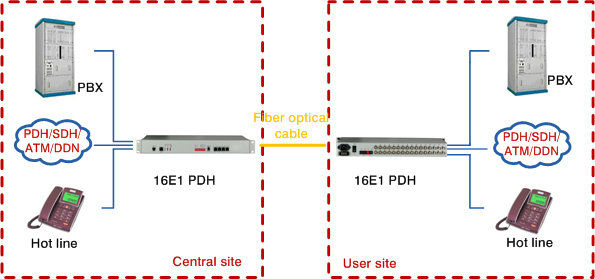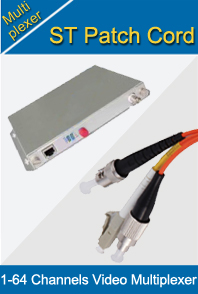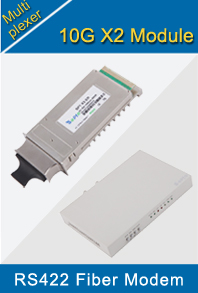-

- Sopto Home
-

- Special Topic
-

- Multiplexer Knowledge
-

- Guide to Mux and Demux
Multiplexer Knowledge
- Why is Multiplexing Needed in Data Communication Systems?
- What is Concept of Multiplexing in Telephone System?
- What is Digital TV Frequency?
- Outlook of the WDM Networks
- DWDM Technical Overview
- CWDM Technical Overview
- How to Activate Cable Modems?
- How to Install a Fiber Optic Modem?
- How do I Choose a Best Fiber Modem?
SOPTO Special Topic
Certificate



Guarantee
Except products belongs to Bargain Shop section, all products are warranted by SOPTO only to purchasers for resale or for use in business or original equipment manufacturer, against defects in workmanship or materials under normal use (consumables, normal tear and wear excluded) for one year after date of purchase from SOPTO, unless otherwise stated...
Return Policies
Defective products will be accepted for exchange, at our discretion, within 14 days from receipt. Buyer might be requested to return the defective products to SOPTO for verification or authorized service location, as SOPTO designated, shipping costs prepaid. .....
Applications
Multiplexers can be used to connect PBX, Hot line and other devices of network from central site to user site through fiber optical cable.
SOPTO Products
- Fiber Optic Transceiver Module
- High Speed Cable
- Fiber Optical Cable
- Fiber Optical Patch Cords
- Splitter CWDM DWDM
- PON Solution
- FTTH Box ODF Closure
- PCI-E Network Card
- Network Cables
- Fiber Optical Adapter
- Fiber Optical Attenuator
- Fiber Media Converter
- PDH Multiplexers
- Protocol Converter
- Digital Video Multiplexer
- Fiber Optical Tools
- Compatible
Related Products
Performance Feature
High integration desig
Low power consumption
Good EMC, EMI
Stable and Reliable
Multiplexer Knowledge
Recommended


Guide to Mux and Demux
Mux, is an abbreviation for multiplexing or multiplexer, refers to the process of combining two or more inputs into a single, aggregate signal transported via a single transmission channel, or a device that performs the process. Demux, on the other hand, is an abbreviation for demultiplexing or demultiplexer, and refers to the separation of two or more previously multiplexed channels into their component parts, or a device does so.
The job of a “multiplexer” is to allow multiple signals to share a single common output. For example, a single 8-channel multiplexer would connect one of its eight inputs to the single data output. Multiplexers are used as one method of reducing the number of logic gates required in a circuit or when a single data line is required to carry two or more different digital signals. On the opposite, the demultiplexer takes one single input data line and then switches it to any one of a number of individual output lines one at a time. The demultiplexer converts a serial data signal at the input to a parallel data at its output lines.

Often a multiplexer and a demultiplexer are combined into a single device allowing the device to process both incoming and outgoing signals. Alternately, a multiplexer’s single output may be connected to a demultiplexer’s single input over a single channel. Either method is often used as a cost-saving measure. Since most communication systems transmit in both directions, the single combined device, or two separate devices, will be needed at both ends of the transmission line.
The multiplexer is a very useful combinational device that has its uses in many different applications such as signal routing, data communications and data bus control. When used with a demultiplexer, parallel data can be transmitted in serial form via a single data link such as a fibre optic cable or telephone line. They can also be used to switch either analogue, digital or video signals, with the switching current in analogue power circuits limited to below 10mA to 20mA per channel in order to reduce heat dissipation.

To manage bandwidth and expand capacity of existing fiber optic backbones, Wavelength Division Multiplexing (WDM) works by simultaneously combining and transmitting multiple signals at different wavelengths in the same fiber. The common configuration of CWDM mux/demux module is 2CH, 4CH, 8CH, 16CH, 18CH CWDM mux/demux module. 3 single fibers or dual fiber connection for CWDM Mux/demux are available. As for DWDM mux/demux, the common configuration is 2CH, 4CH, 8CH, 16 CH, 32CH, 40CH channels.
Sopto provides a wide selection of mux demux OADM products to meet various channel count and spacing requirements. They also offer all types of fiber optic cables, want to learn more, please contact a Sopto representative by calling 86-755-36946668, or by sending an email to info@sopto.com.



